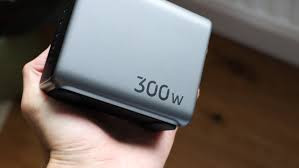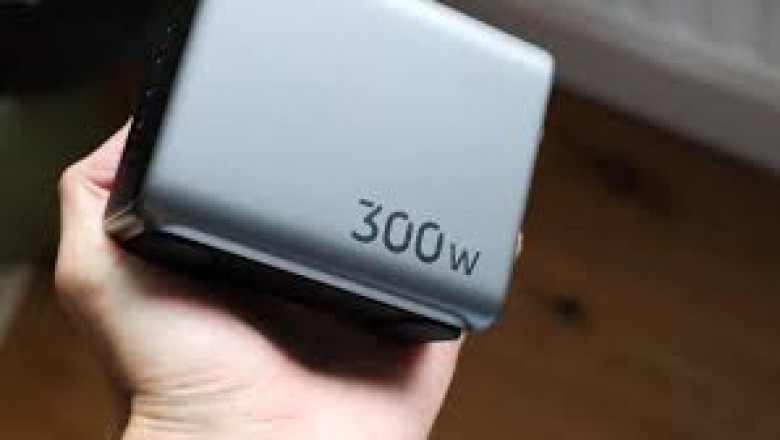views

Introduction
The Netherlands GaN Charger Market a nation at the forefront of technological adoption and sustainability, has readily embraced the benefits of Gallium Nitride (GaN) chargers. Their superior efficiency, compact design, and faster charging capabilities align perfectly with the Dutch focus on innovation and environmental responsibility. However, the landscape of power electronics is continuously evolving, and the impact of wide bandgap (WBG) semiconductor advancements extends beyond GaN, promising even greater strides in efficiency, power density, and sustainability within the Netherlands and globally. This article explores the ongoing impact of WBG semiconductor technology, highlighting advancements beyond GaN and their potential implications for the Netherlands GaN charger market and broader energy ecosystem.
The Wide Bandgap Semiconductor Spectrum: Beyond Gallium Nitride
While GaN has garnered significant attention for its transformative role in charging technology, it is part of a broader family of WBG semiconductors that offer compelling advantages over traditional silicon-based materials. These materials, characterized by their larger band gaps (typically > 2 eV), exhibit superior properties such as higher breakdown voltages, higher switching frequencies, and the ability to operate at higher temperatures. This translates to more efficient power conversion, smaller and lighter devices, and enhanced reliability across a wide range of applications.
Beyond GaN, the most prominent WBG semiconductor gaining traction is Silicon Carbide (SiC). While GaN excels in high-frequency and high-efficiency applications, particularly at lower to medium voltage ranges, SiC demonstrates exceptional performance in high-voltage and high-power applications.
The Impact of SiC on Power Electronics and the Netherlands
While GaN has revolutionized the charger market, SiC is making significant inroads in other power electronics applications relevant to the Netherlands' sustainable energy goals:
· Electric Vehicles (EVs): The Netherlands is a strong adopter of EVs, and SiC is playing a crucial role in enhancing their performance. SiC-based inverters and on-board chargers in EVs offer higher efficiency, leading to longer driving ranges and faster charging times. The ability of SiC to operate at higher temperatures also reduces the need for bulky cooling systems, contributing to lighter and more compact vehicle designs. Several EV manufacturers are already transitioning to 800V architectures utilizing SiC to achieve faster charging and improved efficiency.
· Renewable Energy Systems: The Netherlands' ambitious renewable energy targets necessitate efficient power conversion technologies. SiC is being increasingly used in solar inverters and wind turbine converters to improve energy conversion efficiency and reduce losses, maximizing the output from these clean energy sources. Its high-voltage capability is particularly beneficial for grid-scale energy storage systems.
· Industrial Motor Drives: SiC-based motor drives offer significant energy savings in industrial applications, which aligns with the Netherlands' focus on industrial sustainability. The higher efficiency and switching frequencies of SiC enable more precise motor control and reduced energy consumption.
· Power Supplies for Data Centers: The Netherlands hosts a significant number of data centers. SiC-based power supplies offer higher power density and efficiency, reducing energy consumption and the associated carbon footprint of these energy-intensive facilities.
· High-Voltage Infrastructure: As the Netherlands modernizes its electricity grid to accommodate increasing renewable energy penetration and EV charging infrastructure, SiC's high breakdown voltage capabilities become invaluable for building more robust and efficient high-voltage power transmission and distribution systems.
Synergies and Future Trends in the Netherlands GaN Charger Market
While GaN and SiC cater to different voltage and power ranges, advancements in both materials can create synergies and influence the future of the Netherlands GaN charger market:
· Hybrid GaN-SiC Solutions: Future high-power chargers might incorporate both GaN and SiC components to optimize efficiency and cost across different voltage and current levels within the charging circuit.
· Higher Power GaN Chargers: Continuous innovation in GaN technology is pushing its voltage and power handling capabilities. This could lead to GaN chargers capable of efficiently charging larger devices like high-performance laptops and potentially even contributing to faster EV charging solutions in the future, complementing SiC-based EV chargers.
· Integration with Advanced Topologies: Both GaN and SiC enable the use of more advanced power converter topologies (e.g., totem-pole PFC) that further enhance efficiency and reduce component count in chargers and other power electronic systems.
· Focus on Miniaturization and Higher Power Density: The inherent advantages of both GaN and SiC will continue to drive the trend towards smaller, lighter, and more powerful chargers, catering to the demands of increasingly mobile and power-hungry electronic devices.
· Cost Reduction: As manufacturing processes for both GaN and SiC mature and production volumes increase, the cost of these devices is expected to decrease, making advanced charging solutions more accessible to consumers in the Netherlands.
Other Emerging Wide Bandgap Materials
Beyond GaN and SiC, research and development are ongoing for other promising WBG materials, including:
· Gallium Oxide (Ga₂O₃): This material exhibits an ultra-wide bandgap, potentially enabling devices with even higher breakdown voltages than SiC. While still in early stages of commercialization, Ga₂O₃ holds promise for ultra-high voltage applications.
· Aluminum Nitride (AlN): With a bandgap even wider than GaN, AlN is being explored for high-temperature and high-frequency applications, as well as for deep-ultraviolet (UV) light emitters.
· Diamond: Possessing exceptional thermal conductivity and a very wide bandgap, diamond is considered the ultimate semiconductor material. However, high production costs currently limit its widespread use in power electronics.
While these materials are not yet impacting the charger market significantly, their future advancements could lead to even more revolutionary power electronic solutions.
Challenges and Opportunities for WBG Adoption in the Netherlands
Despite the immense potential, the wider adoption of WBG semiconductors in the Netherlands faces some challenges:
· Higher Material and Manufacturing Costs (especially for SiC): While costs are decreasing, SiC devices, in particular, can still be more expensive than their silicon counterparts.
· Supply Chain Development: Establishing robust and scalable supply chains for WBG materials and devices is crucial for widespread adoption.
· Design and Application Expertise: Engineers need to develop expertise in designing and implementing circuits utilizing GaN and SiC to fully leverage their capabilities.
· Standardization and Reliability Testing: Establishing industry standards and rigorous reliability testing protocols are essential for ensuring the long-term performance and safety of WBG-based products.
However, the Netherlands, with its strong focus on innovation and sustainability, is well-positioned to capitalize on the opportunities presented by WBG semiconductors:
· Government Support for Green Technologies: Continued government investment and initiatives promoting energy efficiency and renewable energy will drive the adoption of WBG technologies.
· Strong Research and Development Ecosystem: The Netherlands has a strong base of universities and research institutions actively involved in semiconductor research.
· Collaboration between Industry and Academia: Fostering collaboration between research institutions and companies can accelerate the development and commercialization of WBG-based solutions.
· Consumer Awareness and Demand for Sustainable Products: The environmentally conscious Dutch consumer base is likely to embrace energy-efficient technologies like GaN and SiC chargers and other power electronic devices.
Conclusion
The Netherlands GaN charger market represents just the tip of the iceberg in the wide bandgap semiconductor revolution. While GaN has already delivered significant improvements in charging efficiency and portability, the advancements in other WBG materials, particularly Silicon Carbide, promise even more profound impacts across various sectors crucial to the Netherlands' sustainable energy future. From enhancing the efficiency of electric vehicles and renewable energy systems to reducing energy consumption in industrial applications and data centers, the continued innovation and adoption of WBG semiconductors beyond GaN will be instrumental in powering a greener and more efficient Netherlands. As costs decrease and expertise grows, the Netherlands is poised to be a leader in embracing the full potential of the wide bandgap semiconductor spectrum, driving innovation and contributing to a more sustainable world.






















Comments
0 comment